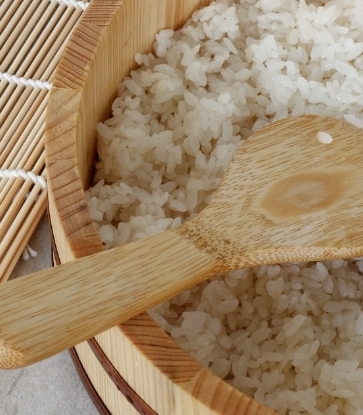“Encasing meat or seafood in the paper bark and cooking it over hot coals or stones is a traditional aboriginal way of cooking,” says the chef. It’s similar to cooking en papillotte, except this method infuses the seafood with some of the bark's smoky, earthy flavours.
If these ingredients and techniques sound unfamiliar, that’s because they hail from rural Australia. As chef and owner of modern Australian restaurant Whitegrass, he goes through great lengths to procure them.
“We have to ship them in directly from Australia,” says the chef. “We work with a company called Outback Pride which is based in Australia.”

But shipment dates aren’t always certain as it depends on supply and availability of the ingredients, often harvested from disparate parts of the 7.6 million km square island-continent.
The paper bark for instance, is harvested from paper bark trees that grow in the swamps of Queensland and the northern reaches of the country while the desert limes are plucked from small thorny shrubs native to New South Wales, Queensland and South Australia.
Then, there's the challenge of taming these ingredients. "Some of the flavours of these bush ingredients can be very intense as they take on the harshness of the environment they grow in," he says.
Not that that's stopped him. He explains: “I tend to use them sparingly or in the right amounts so that they enhance and complement the dish and not overpower it. As a Modern Australian restaurant, I wanted to pay homage to my home country and what better way to do this than to showcase ingredients that are completely unique to Australia."
"Together with other components on my plates, they produce flavour combinations that Singapore diners would have rarely experienced before."
Until you drop in for a taste of the restaurant's menu, here's a preview.

The image you see at the start of the article used to hold the ingredients is not some fancy form of plating. in fact, it's the paper bark that's used to wrap seafood to cook over hot coals - a traditional aboriginal cooking technique. These are peeled off from paper bark trees that grow in swampy locales particularly in the north of Australia.
Lemon Aspen Berry
As its name suggests, this pale yellow berry has a citrusy flavour described as a cross between grapefruit and lemon. It lends itself well to beverages and sauces but the chef pairs it up with a lobster sashimi. The plant is native to north Queensland where it grows in well-drained soil with plenty of water and has long been part of the bush tucker diet.

It resembles mini lemons and certainly belongs to the citrus family but according to Sam, it “offers a distinct flavor different to the regular lime or lemon.” They grow on thorny shrubs or small trees and can be found in the region stretching from South Australia to Queensland and New South Wales. To use them, he grills the desert limes on a plancha to bring out a caramelised citrusy flavour which helps to round off a dish.

This chamomile tea-like powder is actually the pollen of wild fennel that grows everywhere in Australia – from roadsides to hills and even rocky shores. “It is very aromatic, a tad citrusy, and has an aniseed-like, earthy taste and aroma,” says Sam. Despite its ubiquity, the chef treasures this ingredient the most as it isn’t shipped in often. He uses a small amount in one of his canapes: Smoked Hamachi with fennel jam on a black pepper puff with fennel pollen infused fresh cultured cream.

Sea blight grows in saline or alkaline soils often around coastal salt-flats and tidal wetlands. Its harsh environments results in flavour notes that are at once floral while grass-like and citrusy while salty. At Whitegrass, chef Sam uses it for his steamed ginger custard with shaved pearl oyster, bone broth, sea succulents and green almond dish.

From afar, the mountain pepper berry resembles black peppercorn but on the palate, it tastes slightly sweet with a hint similar to Sichuan pepper corns. “It grows on the native pepper berry plant that is naturally found in the cold high country in Southern New South Wales, Victoria and Tasmania,” says Sam. When it comes to cooking with it, the chef grates it over his salad of slow roasted young beetroots, smoked eel and rosella jam for a peppery kick.





















